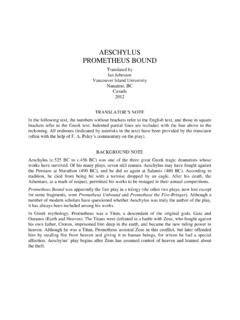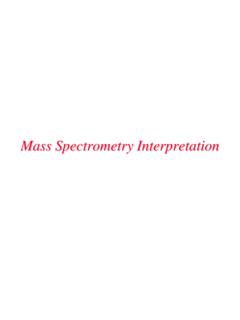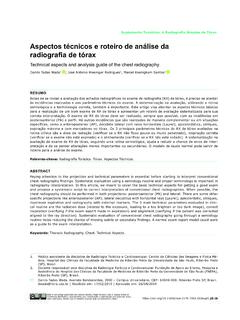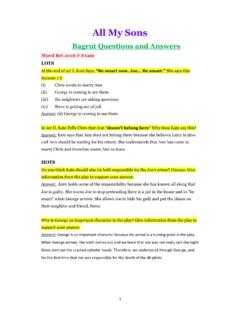Transcription of BIOMECHANICS AND MOTOR CONTROL OF HUMAN …
1 BIOMECHANICS ANDMOTOR CONTROL OFHUMAN MOVEMENTF ourth EditionDAVID A. WINTERU niversity of Waterloo,Waterloo, Ontario, CanadaJOHN WILEY & sons , and MOTOR CONTROL of HUMAN Movement, Fourth Edition David A. WinterCopyright 2009 John Wiley & sons , Inc. ISBN: 978-0-470-39818-0To my wife and children, and to my colleagues, graduate and undergraduatestudents, all of whom have encouraged, challenged, and influenced me overthe book is printed on acid-free 2009 by John Wiley & sons , Inc. All rights by John Wiley & sons , Inc., Hoboken, New JerseyPublished simultaneously in part of this publication may be reproduced, stored in a retrieval system, or transmitted inany form or by any means, electronic, mechanical, photocopying, recording, scanning, orotherwise, except as permitted under Section 107 or 108 of the 1976 United States CopyrightAct, without either the prior written permission of the Publisher, or authorization throughpayment of the appropriate per-copy fee to theCopyright Clearance Center, Inc.
2 , 222 RosewoodDrive, Danvers, MA 01923, (978) 750-8400, fax (978) 750-4470, or on the web Requests to the Publisher for permission should be addressed to thePermissions Department, John Wiley & sons , Inc., 111 River Street, Hoboken, NJ 07030, (201)748-6011, fax (201) 748-6008, e-mail: of Liability/Disclaimer of Warranty: Whilethe publisher and author have used their bestefforts in preparing this book, they make no representations or warranties with respect to theaccuracy or completeness of the contents of this book and specifically disclaim any impliedwarranties of merchantability or fitness for a particular purpose. No warranty may be created orextended by sales representatives or written salesmaterials. The advice and strategies containedherein may not be suitable for your situation. You should consult with a professional whereappropriate. Neither the publisher nor author shall be liable for any loss of profit or any othercommercial damages, including but not limited to special, incidental, consequential, or general information on our other products and services or for technical support, pleasecontact our Customer Care Department within the United States at (800) 762-2974, outside theUnited States at (317) 572-3993 or fax (317) also publishes its books in a variety of electronic formats.
3 Some content that appears inprint may not be available in electronic books. For more information about Wiley products, visitour web site at of Congress Cataloging-in-Publication Data:Winter, David A., 1930- BIOMECHANICS and MOTOR CONTROL of HUMAN movement / David A. Winter. 4th bibliographical references and 978-0-470-39818-0 (cloth)1. HUMAN mechanics. 2. MOTOR ability. 3. Kinesiology. I. 6 dc222009019182 Printed in the United States of America10987654321 CONTENTSP reface to the Fourth Editionxiii1 BIOMECHANICS as an , , Description,Analysis, and Assessment, , Description, and Monitoring, , and Interpretation, and its Relationship with Physiology andAnatomy, of the Textbook, Processing, , , , and Joint BIOMECHANICS , , of HUMAN Movement, MOTOR Synergies, , 12iiiivCONTENTS2 Signal , and Cross-Correlation Analyses, to the Pearson Correlation, for Auto- and Cross-Correlation Coefficients, Properties of the Autocorrelation Function, Properties of the Cross-Correlation Function, in Removing the Mean Bias from theSignal, Implementation of Auto- and Cross-CorrelationFunctions, of Autocorrelations, of Cross-Correlations, Analysis, Time Domain vs.
4 Frequency Domain, Fourier (Harmonic) Analysis, Fourier Transform (FFT), of Spectrum Analyses, Averaging of Repetitive Waveforms, of Ensemble-Averaged Profiles, of Time Bases to 100%, of Average Variability about the MeanWaveform, , 433 Development and Complexity of Problem, Conventions, Spatial Reference System, Description of a Body Segment in Space, Measurement Techniques, , Joint Angle Measuring Systems, , Measurement Techniques, of Basic Lens Optics, Setting and Field of Focus, , , Techniques, and Disadvantages of Optical Systems, of Various Kinematic Systems, of Raw Kinematic Data, of Unprocessed Image Data, versus Noise in Kinematic Data, of Calculating Velocities and Accelerations, and Curve Fitting of Data, of Some Smoothing Techniques, of Other Kinematic Variables, Angles, Angles, Linear and Angular, Linear and Angular, Based on Kinematic Data, , 804 of Anthropometry in Movement BIOMECHANICS .
5 Dimensions, , Mass, and Inertial Properties, Density, Densities, Mass and Center of Mass, of Mass of a Multisegment System, Moment of Inertia and Radius of Gyration, Theorem, of Anthropometric Tables and Kinematic Data, Experimental Measures, of the Anatomical Center of Mass of theBody, of the Mass of a Distal Segment, of Inertia of a Distal Segment, Axes of Rotation, Anthropometry, Area of Muscles, in Muscle Length during Movement, per Unit Cross-Sectional Area (Stress), Advantage of Muscle, Muscles, Based on Anthropometric Data, , 1065 Kinetics: Forces and Moments of Models, Model Development, Acting on the Link-Segment Model, Reaction Forces and Bone-on-Bone Forces, Link-Segment Equations the Free-Body Diagram, Transducers and Force Plates, Force Transducers, Plates, Pressure-Measuring Sensory Systems, of Force Plate and Kinematic Data, Force Plate and Kinematic Data, of Moment-of-Force Curves, Note about the Wrong Way to Analyze Moments ofForce, between Center of Mass and Center ofPressure, and Kinetics of the Inverted PendulumModel, Forces During Dynamic Conditions, in Muscle Force Estimates, Problem (Scott and Winter, 1990)
6 , Based on Kinetic and Kinematic Data, , 1376 Mechanical Work, Energy, and , Energy and Work, of Conservation of Energy, versus External Work, Work of Muscles, Work of Muscles, Mechanical Power, Work of Muscles, Work Done on an External Load, Energy Transfer between Segments, , of Inefficient Movement, of Energy Flows, of Energy Storage, of a Body Segment and Exchanges of EnergyWithin the Segment, Energy of a Multisegment System, of Internal and External Work, Work Calculation, Work Calculation, Balances at Joints and Within Segments, Transfer via Muscles, Balance Within Segments, Based on Kinetic and Kinematic Data, , 1747 Three-Dimensional Kinematics and , Systems, Reference System, Reference Systems and Rotation of Axes, Possible Rotation Sequences, and Cross Products, and Anatomical Axes Systems, of a Kinematic Data Set, of Segment Angular Velocities andAccelerations, Analysis of Reaction Forces and Moments, Three-Dimensional Equations of Motion for aSegment, s Three-Dimensional Equations of Motion for aSegment, of a Kinetic Data Set, Mechanical Powers, Moment and Power Curves, Further Reading, , 1988 Synthesis of HUMAN Movement Forward , and Constraints of Forward SolutionModels, of Forward Solution Simulations, of Forward Solution Models, Formulation, s Equations of Motion, Generalized Coordinates and Degrees of Freedom, Lagrangian Function L, Forces [Q]
7 , s Equations, and Reference Systems, and Velocity Vectors, Energy, Energy, Potential Energy and Dissipative Energy, Forces and Torques, of Joints, Example, , , 222 CONTENTSix9 Muscle , MOTOR Unit, of MOTOR Units, Principle, of MOTOR Units Fast- and Slow-TwitchClassification, Muscle Twitch, of Graded Contractions, Characteristics of Muscles, Curve of the Contractile Element, of Parallel Connective Tissue, Elastic Tissue, Vivo Force-Length Measures, Characteristics, Contractions, Contractions, of Length and Velocity versus Force, Muscle Characteristics with LoadCharacteristics: Equilibrium, Modeling, of a Model EMG Driven, , 24710 Kinesiological Introduction, Electrophysiology of Muscle Contraction, MOTOR End Plate, Sequence of Chemical Events Leading to a Twitch, Generation of a Muscle Action Potential, Duration of the MOTOR Unit Action Potential, Detection of MOTOR Unit Action Potentials fromElectromyogram during Graded Contractions, Recording of the Electromyogram, Amplifier Gain, Input Impedance, Frequency Response, Common-Mode Rejection, Cross-Talk in Surface Electromyograms, Recommendations for Surface Electromyogram Reportingand Electrode Placement Procedures, Processing of the Electromyogram, Full-Wave Rectification, Linear Envelope, True Mathematical Integrators, Relationship betweenElectromyogram and BiomechanicalVariables, Electromyogram versus Isometric Tension.
8 Electromyogram during Muscle Shortening andLengthening, Electromyogram Changes during Fatigue, References, 27711 Biomechanical Movement Introduction, The Support Moment Synergy, Relationship betweenMsand the Vertical Ground ReactionForce, Medial/Lateral and Anterior/Posterior Balance in Standing, Quiet Standing, Medial Lateral Balance CONTROL during WorkplaceTasks, Dynamic Balance during Walking, The HUMAN Inverted Pendulum in Steady StateWalking, Initiation of Gait, Gait Termination, References, 295 APPENDICESA. Kinematic, Kinetic, and Energy Data296 Figure Trial Marker Locations and Mass and FrameRate Information, 296 CONTENTSxiTable Coordinate Data (cm), 297 Table (a)Filtered Marker Kinematics Rib Cage and GreaterTrochanter (Hip), 301 Table (b)Filtered Marker Kinematics Femoral LateralEpicondyle (Knee) and Head of Fibula, 306 Table (c)Filtered Marker Kinematics Lateral Malleolus (Ankle)and Heel, 311 Table (d)Filtered Marker Kinematics Fifth Metatarsal andToe, 316 Table (a)Linear and Angular Kinematics Foot, 321 Table (b)Linear and Angular Kinematics Leg, 326 Table (c)Linear and Angular Kinematics Thigh, 331 Table (d)Linear and Angular Kinematics 1/2 HAT, 336 Table Joint Angular Kinematics Ankle, Knee, andHip, 341 Table (a)Reaction Forces and Moments of Force Ankle andKnee, 346 Table (b)
9 Reaction Forces and Moments of Force Hip, 350 Table Potential, Kinetic, and Total Energies Foot,Leg, Thigh, and1/2 HAT, 353 Table Generation/Absorption and Transfer Ankle,Knee, and Hip, 358B. Units and Definitions Related to Biomechanical andElectromyographical Measurements361 Table SI Units, 361 Table SI Units, 361 Index367 PREFACE TO THE FOURTHEDITIONThis text is a revision of the third edition with the goal of adding two addi-tional chapters reflecting additional directions in the BIOMECHANICS original text, BIOMECHANICS of HUMAN Movement, published in 1979, hadits title changed, when the second edition was published in 1990, toBiome-chanics and MOTOR CONTROL of HUMAN Movementto acknowledge the newdirections of the 1980s. In that second edition, five of eight chapters addressedvarious aspects of muscles and MOTOR systems. The third edition, publishedin 2004, with its major new addition of three-dimensional (3D) kinematicsand kinetics, reflects the continued emphasis on the MOTOR CONTROL in the first three editions, the goal of the text is to fill the gap in thehuman movement science area where modern science and technology areintegrated with anatomy, muscle physiology, and electromyography to assessand understand HUMAN movement.
10 The emphasis is on dynamic movementsand on live data. A wide spectrum of measurement and analysis techniquesis presented and is aimed at those interested in higher-level quantitativeassessments. The text is intended to appeal to the practitioner as well asthe researcher and to those concerned with the physically handicapped, theelite athlete, and the person in the edition has two new chapters, Chapter 2, Signal Processing, andChapter 11, Biomechanical Movement Synergies. In the previous editions,there was some material on frequency analysis and digital filtering in thechapter on kinematics; most of this information has been removed and isnow more formalized along with other valuable signal processing techniquesnot available in previous additions: auto- and cross correlation and ensem-ble averaging techniques. The previous Chapter 2, Kinematics, has becomeChapter 3 but retains the special digital filtering techniques necessary to filterkinematic data with no phase shift.












